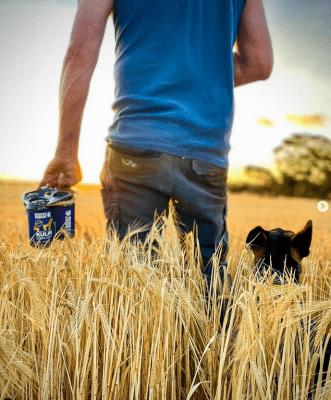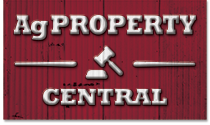
Harvesting barley at Tolga Farm last year. Photo: Tolga Farm
MIXED farmers Brendon and Gabrielle Savage have increased their sheep numbers by 50 percent to buck the Western Australian flock trend exacerbated by concerns Australia’s live export market will close.
To support the lift, the Savages have expanded subclover-based pastures to account for two-thirds rather than half their 5200ha property Tolga Farm, located at Kulin in the south-east Wheatbelt.
A study on Tolga Farm has been written by WA’s Department of Primary Industries and Regional Development and Mr Savage, and highlights the benefits of its recent switch to a double pasture-single crop phase.
“While recent drought conditions and policy uncertainty regarding live trade shipments from WA have depressed producer prices, the OECD-FAO forecast price increases for sheep meat to 2031 as the production from world’s larger exporter, New Zealand, is increasingly constrained by the rising costs of pasture due to competition from forestry, dairy and beef,” the study said.

Gabrielle and Brendon Savage.
“The reintegration of livestock and pastures back into cropping farms offer potential opportunities in terms of livestock productivity and profitability, with lower financial risk, by including biological nitrogen and synergies with cropping in addition to high livestock performance.”
On top of its profitable livestock enterprise, the study indicates Tolga Farm’s crop yields have lifted from the district average as the pasture phase increases amid comparatively low emissions for the farm as a whole.
Sheep on solid ground
Large-framed composite autumn-drop lambs are the mainstay of Tolga Farm’s livestock income, and the Savages aim to grow them on low-cost subclover-based pasture, with the last draft turned off by November.
Processed at WAMMCO, they recorded an average carcase weight of around 24kg by mid-September in 2020, 2021 and 2022.
In 2021, pastures covered half of Tolga Farm, and sheep numbers peaked at 8600, including about 3500 ewes.
By 2025, the Savages hope to be running around 4000 ewes, with high-fertility composite meat sheep and Merino-heavy crossbreds forming 30pc each, and the balance being self-shedders which are also being infused with high-fertility genetics.
Improved genetics are also being sought to further lower mortality and increase growth rates.
With limited supplementary feeding, composite ewes have had a lamb marking rate as high as 170pc.

Table 1: Key production statistics derived from analysis of WAMMCO slaughter sheets and farm mating, and lamb drop data for multibreed prime lambs.
From 2020 to 2022, Tolga Farm’s pastures supported an average growth rate for first-draft lambs to 389g/day, above the 300-350g/d a 2020 Australian feedlot producer survey indicated was the most frequently reported feedlot growth rate.
The Savages aim is to increase legume content and species sown in pasture to improve climate resilience through being better able to deal with false breaks, dry starts, and dry years.
Their farm’s stocking rate of 2.61 DSE/ha is being lifted to 2.8 DSE/ha, still conservative by district standards, implying stock can forage around large paddocks to find their required feed.

Self-shedding ewes are part of Tolga’s flock. Photo: Tolga Farm
Barley and oats in, wheat out
Since the 1970s, the Savage family has been cropping at Tolga Farm, where the average annual rainfall is 350mm.
The farm’s largest historical crop-production risk was deemed to be frost, which in some seasons severely impacted grain yield and quality.
As the most frost-susceptible grain, wheat was dropped from the rotation in 2020, and the Savages now grow malting barley and dual-purpose oats as their cash crops, with early grazing proving an effective frost-mitigation strategy.

Malt made from Tolga Farm’s barley alone goes into Rocky Ridge’s Kulin Draught beer, seen here with Brendon Savage and working dog Steff. Photo: Tolga Farm
About 5pc of Tolga Farm’s cereal crop is windrowed to provide fodder for confined feeding, with nutritional supplements sprayed on to designated crops.
This improves palatability and digestibility of stubble which, supplemented with high-protein licks, is the feed base for sheep over summer.
Tolga Farm is WA’s first Certified Sustainable barley grower, and sells loads grown to spec to Rocky Ridge at Busselton, Australia’s first Certified Sustainable brewery, and also Boortmalt, the world’s largest maltster, for use at its Forrestfield facility.
Rocky Ridge and Boortmalt are buying from Tolga Farm because it fits their call for a single-origin source of low-emission grain from the Certified Sustainable barley supply chain.
Grain oats are stored on farm and sold on spikes in the market to the containerised export market.
Low inputs paramount
Under Certified Sustainable parameters, herbicides, fungicides and synthetic fertilisers are used sparingly when needed.
It means Tolga Farm’s applied nitrogen rate in cropping paddocks is down to as little as eight units of nitrogen per hectare, or about 20pc of the district average in conventional cropping systems.
Much of Tolga’s nutrition inputs are applied in liquid form, either in furrow at planting or as a foliar spray, and the farm’s alternative practices are based on an understanding of soil health gained from the Australian Soil Planners farm-consultancy group system.
Since 2004, the Savages have farmed using a mix of conventional and alternative methods, with the use of liquid calcium for root vigour, either banded at seeding or applied as foliar spray with other inputs including kelp and trace elements, an example of the latter.

Table 2: Tolga Old (50/50 livestock/crop) and Target (65/35 livestock/crop) Systems, Planfarm Benchmark (median) and Planfarm Top 25pc, 2007–21 (15 years)
Oats in 2022 yielded up to 4.6t/ha and averaged 4.2t/ha, and provided evidence of substantial lifts in fully transitioned paddocks following two years of pastures compared to previous yields which were around industry averages.
“This case study highlights the importance of promoting lower-input mixed-farming systems in WA’s public policy,” the study says.
“These innovative systems have the potential to be both profitable and environmentally friendly by reducing greenhouse gas emissions and emissions intensity and building soil carbon.
“By measuring carbon cycling and establishing farm net carbon levels, farmers can gain access to new markets that increasingly prioritise sustainability.
“WA public policy also aims to promote new farming systems that mitigate climate risks as an alternative to continuous cropping systems.”
The study supports the practice of mixed farming with sheep as a viable alternative to continuous cropping by improving climate resilience and soil health, and reducing production risk.
It says Tolga Farm’s low inputs ensure costs do not become unmanageable when prices escalate, with the Savages happy to trade off some profit upside for a lower-risk and lower-outlay operation.
“This ensures the farm either makes a profit or does not suffer heavy losses in poor seasons.”
The Savages’ business objective is sustainable intergenerational farming, and they have over time purchased adjoining blocks to help achieve this.
In addition, the Savages aim to sow tillage radish to ameliorate soil compaction caused by livestock and machinery traffic, improve soil structure and water infiltration, recycle nutrients, and provide forage.
Subclover is the springboard for the change into low-input farming, and provides organic nitrogen, as well as kickstarting the carbon and nitrogen cycles, and benefits from being sown with tillage radish.
The legume pasture phase can also reduce persistent weed burdens, particularly herbicide-resistant ryegrass, in the subsequent crop phase.
The Savages estimate the farm uses as much as 40pc/ha less herbicide by volume compared to producers within the district.
Get our free news straight to your inbox – Click here



HAVE YOUR SAY